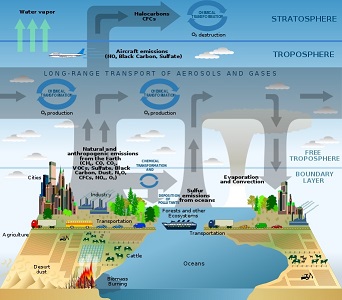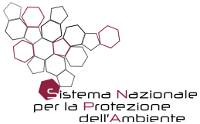Air pollution is a very important environmental and social issue and, at the same time, it is a complex problem posing multiple challenges in terms of management and mitigation of harmful pollutants. Air pollutants are emitted from anthropogenic and natural sources; they may be either emitted directly (primary pollutants) or formed in the atmosphere (as secondary pollutants). They have a number of impacts on health, ecosystems, the built environment and the climate; they may be transported or formed over long distances; and they may affect large areas. Effective action to reduce the impacts of air pollution requires a good understanding of its causes, how pollutants are transported and transformed in the atmosphere, and how they affect humans, ecosystems, the climate, and subsequently society and the economy. Effective air‑quality policies call for action and cooperation at global, European, national and local levels, extending across most economic sectors and engaging the public. Holistic solutions involving technological development, structural changes and behavioural changes must be found (Air Quality in Europe - 2016 report, EEA Report 28/2016 https://www.eea.europa.eu/publications/air-quality-in-europe-2016).
L'introduzione al rapporto 2016 dell'Agenzia Europea dell'Ambiente ricorda che l'inquinamento dell'aria è una importante problematica ambientale e sociale, che impone cambiamenti in termini di gestione e mitigazione degli inquinanti nocivi. L'inquinamento atmosferico ha impatti sulla salute, sull'ecosistema, sui manufatti e sul clima. Si tratta non solo di una questione locale in quanto gli inquinanti possono essere trasportati su grande scala ed interessare aree estese e per tale motivo le azioni effettive per ridurre gli impatti dell'inquinamento atmosferico richiedono non solo una buona comprensione delle cause e degli impatti ma anche una cooperazione a livello globale, europeo, nazionale e locale. Gli interventi devono riguardare diversi settori economici e coinvolgere (anche attivamente) il pubblico.
Con il termine inquinamento atmosferico si intende la presenza nell'aria di sostanze che modificano la naturale composizione dell'atmosfera terrestre: 78% di azoto, 21% di ossigeno e 1% di argon e di "gas in traccia", che comprendono anche tutte le sostanze cosiddette "inquinanti".
Gli inquinanti si suddividono in primari, emessi direttamente in atmosfera, e secondari, formati in atmosfera per reazioni fisico-chimiche tra inquinanti primari.
L'origine di queste sostanze può essere naturale (eruzioni vulcaniche, erosione eolica) o antropica (attività produttive, combustioni).
Una volta immessi in atmosfera, gli inquinanti sono soggetti a fenomeni di dispersione, trasporto e trasformazione chimica; per tale motivo, la concentrazione degli inquinanti in aria cambia notevolmente nel tempo e nello spazio.

By Phillipe Rekacewicz [Public domain], via Wikimedia Commons
We use cookies on our website. Some of them are essential for the operation of the site, while others help us to improve this site and the user experience (tracking cookies). You can decide for yourself whether you want to allow cookies or not. Please note that if you reject them, you may not be able to use all the functionalities of the site.
